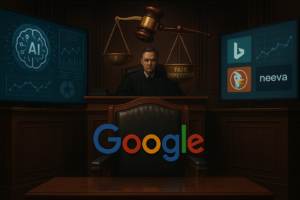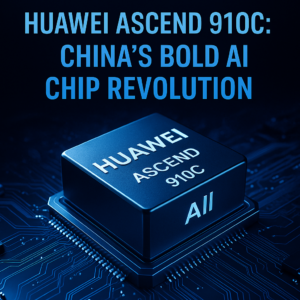The Power Shift: Google’s AI-Driven Innovations and Their Impact on Consumer Electronics
In a world increasingly driven by artificial intelligence, Google’s recent unveiling of its 45W USB-C charger during the Pixel 9 launch underlines the company’s commitment to integrating advanced technology into everyday devices. This article explores how AI influences design, efficiency, and compatibility in consumer electronics, showcasing the intersection of innovation and user experience.
The dawn of artificial intelligence has reshaped how we perceive and interact with technology. Google’s latest announcement during the Pixel 9 launch, although seemingly centered around a new USB-C charger, reveals a deeper narrative about the integration of AI in our daily lives. This 45W charger not only enhances charging capabilities but also signifies Google’s ongoing commitment to innovation, efficiency, and user-centric design.
The new charger is a step up from its predecessor, the 30W option, providing enhanced power for a range of devices including:
- The new Pixel 9 lineup
- Chromebooks
But what truly sets this charger apart is its design and functionality, reflecting a broader trend in consumer electronics driven by artificial intelligence.
As devices become smarter, the need for more efficient power solutions grows. The 45W USB-C charger exemplifies this shift, utilizing advanced technology to ensure that users can charge their devices quickly and effectively. The repositioning of the USB-C port to the bottom of the charger is a small yet significant design change that enhances usability, making it easier to plug in without crowding other outlets.
Moreover, the charger’s compatibility with multiple devices speaks to the growing demand for versatility in tech products. AI’s role in optimizing device interaction is evident here; the charger can adapt to provide the necessary power without overwhelming devices, which is crucial as we integrate more smart gadgets into our homes and lifestyles.
This innovation doesn’t just stop at hardware. Google’s focus on artificial intelligence during the Pixel event highlights how AI is redefining user experience across all its products. From:
- Predictive text
- Personalized recommendations
AI enhances the functionality of devices, making them more intuitive and user-friendly. The 45W charger is a tangible representation of how AI can influence even the most fundamental aspects of technology—charging.
Furthermore, the competitive landscape is evolving. While Google enters the market with its new charger, other companies, such as Anker, offer similar products at lower prices. This competition fosters innovation, compelling tech giants to continually enhance their offerings. As consumers, we benefit from this race, as it drives companies to incorporate the latest technological advancements, including AI, into their products.
As we look toward the future, the role of artificial intelligence in consumer electronics will only expand. The integration of AI in products like Google’s new charger is not merely a trend; it is indicative of a broader shift in how technology is designed and utilized. As AI continues to evolve, we can expect to see even more innovations that prioritize efficiency, compatibility, and user experience.
In conclusion, Google’s introduction of the 45W USB-C charger during the Pixel 9 launch serves as a reminder of the powerful intersection between artificial intelligence and consumer electronics. As we embrace these advancements, we can look forward to a future where technology not only meets our needs but anticipates them, enhancing our daily lives in unprecedented ways.


